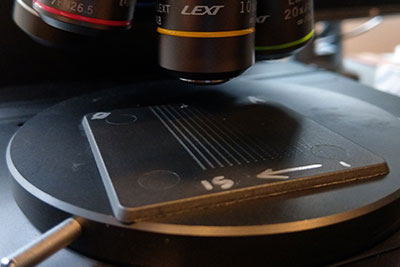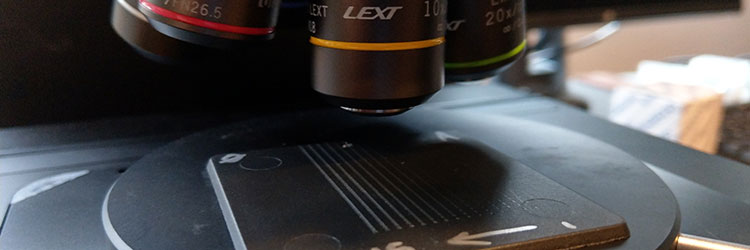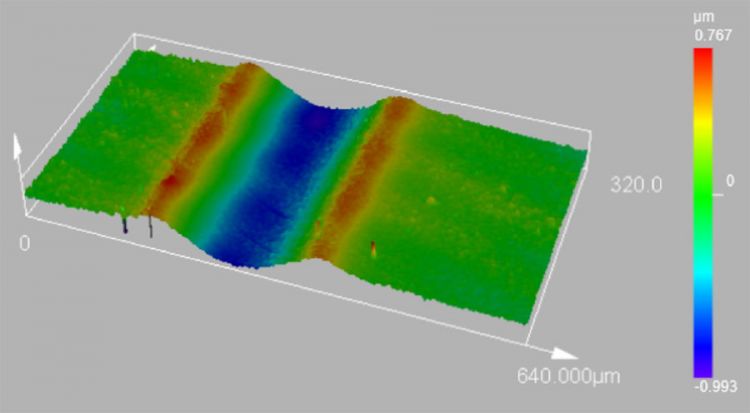As new car owners can attest, the first time their vehicle gets scratched or damaged is usually the most distressing. Maintaining a car’s appearance is not only about aesthetics, it’s also about resale or trade-in value. To help prevent unsightly scratches and minimize damage to cars' plastic components, automobile manufacturers rely on scratch-resistant polymer plastics for their injection molded parts.
Enter Croda International PLC—a leading producer and supplier of additives that improve scratch resistance in plastics. An important part of Croda’s process is to accurately measure how much these additives improve resistance using scratch tests.
Croda Scientists Seek a More Efficient and Precise Scratch-Test Tool
Scientists at Croda had been using a widefield materials microscope to measure a scratch’s width and a white-light interferometer to determine the depth—but they found these methods to be time-consuming and variable. In a bid to improve testing, Croda decided to try our LEXT™ OLS5000 confocal microscope for both the scratch width and depth measurements.
We spoke to Martin Read, team leader for Croda’s polymer additives applications and lead anti-scratch scientist, and his colleagues to find out how it went.
A Day in the Life of an Anti-Scratch Scientist
The job of an anti-scratch scientist at Croda involves producing plastic plaques containing various additives and then damaging them with numerous scratches! Of course, this needs to be controlled, so these scratches are made with a standardized tool at defined forces of 1–20 newton (N).
“It leaves a scratch and two mounds on either side, similar to a plough going through a field,” says Martin.
After the scratching, the researchers measure the depth, width, and profile of the plaques to determine the extent of the damage to each and the differences between them.
Advantages of Laser Scanning Confocal Microscopy Over InterferometryHoping to get more precise data and to speed up the workflow, researchers tried the OLS5000 confocal microscope as the sole equipment to measure scratch width and depth. The LEXT microscope’s laser has a fast scan speed, enabling it to quickly create precise, quantifiable 3D maps of a sample. |  Fast, accurate scratch measurements on polymer plaques with the LEXT OLS5000 microscope |
Croda researchers found that imaging, measurement, and analysis were much quicker using the OLS5000 microscope. In fact, their inspections were 10 to 100 times faster compared to interferometry. Martin explains, “To measure a scratch, we had to set up the interferometer to its coarsest setting, and configuring that is extremely difficult. It takes about an hour to get one measurement. With confocal microscopy we could measure and process 10 scratches on a plastic surface in 2 minutes.”
The scientists were also pleased to find that the LEXT microscope helped improve the precision of results—scratch depth and profile could be measured to the nearest 10 nm. According to Martin, “because the LEXT can accurately measure in 3D we could simply view a slice through the scratch and measure depth much easier”
The LEXT microscope even managed to come to the rescue with tricky materials like polypropylene. As Martin explains, “polypropylene has a porous structure—the interferometer does not detect the surface—it looks straight through it.” Using the LEXT OLS5000 microscope, the scientists were able to obtain a smoother image of the surface and an accurate representation of the scratch, which they could then measure more precisely.
Good News for Croda, Means Good News for the Automotive Industry
Croda determined that the LEXT microscope helped improved their inspections, reporting both increased speed and accuracy. As Martin’s colleague Dimitris Vgenopoulos, applications scientist, puts it, “seeing how fast the Olympus microscope is, it’s almost annoying to think how much time I’ve spent using the old system.”
This improvement in performance is good news for automobile manufacturers and, consequently, car owners. The LEXT OLS5000 microscope helps ensure accurate inspection of these important additives, so you can rest assured that your new car will be up to scratch!
Read the full case study here.
Related Content
Roughness Measurement with LEXT Laser Scanning Microscopes
5 Things You Need to Know About Surface Metrology
3D Evaluation of Automobile Door Switch Embossing Using the LEXT OLS5000 Laser Microscope
Get In Touch


